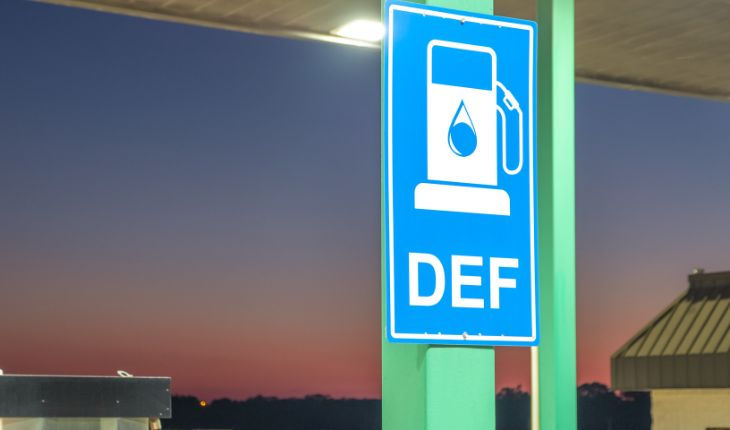The New Drive: Inside the Low Speed Vehicle Revolution
- Sophia Grace
- Aug 6
- 4 min read
In a world craving sustainability, smart cities, and quieter roads, low speed vehicles (LSVs) are emerging as silent champions of modern mobility. Compact, efficient, and designed for short-distance travel, these vehicles offer a refreshing alternative to traditional transport options. Whether it’s a neighborhood commute, a resort shuttle, or a campus ride, LSVs are making their mark with practicality and purpose.
They are not built for speed—they are built for efficiency, accessibaility, and convenience. And as the world shifts gears towards a greener and more connected future, LSVs are accelerating their role in transforming transportation on a human scale.

Expert Market Research Perspective on LSV Innovation
According to Expert Market Research, the North America Low Speed Vehicle Industry is seeing robust advancements fueled by rising environmental awareness, urban congestion, and the growing popularity of gated communities and large campuses. Their insights emphasize that the demand for electric-powered LSVs in utility, commercial, and personal applications is redefining how people perceive short-distance mobility. Expert Market Research further notes that innovations in battery technology and smart vehicle integration are making LSVs more viable, sustainable, and adaptive to the evolving urban ecosystem.
Why Low Speed Vehicles Are Gaining Traction
The appeal of LSVs lies in their purpose-built design and undeniable adaptability. Designed to operate at speeds generally under 25 mph (40 km/h), they fit perfectly in environments where safety, control, and environmental consciousness are priorities. You’ll find them cruising around resorts, maneuvering through college campuses, serving in factories, and even replacing traditional golf carts in many communities.
More than a novelty, LSVs are becoming an essential part of infrastructure planning. They consume less energy, produce minimal emissions, and often require fewer licensing hurdles. These characteristics are encouraging municipalities and private establishments to invest in LSV fleets for specialized transportation needs.
Technology Meets Simplicity: Smarter, Safer LSVs
While low in speed, LSVs are high on tech. From electric drivetrains to smart battery management systems, today’s models are a far cry from the basic, utility-first versions of the past. Advanced braking systems, solar integration, IoT connectivity, GPS tracking, and even autonomous driving features are being introduced in modern LSVs.
This convergence of simplicity with smart mobility technology is what makes LSVs a true innovation. They are not trying to replace traditional vehicles; they are filling a crucial gap—making movement safer, smarter, and more sustainable in controlled or specialized environments.
A Regional Focus: North America Low Speed Vehicle Market
In North America, LSVs are being embraced at an accelerated pace. Residential communities, golf courses, industrial parks, and airports across the United States and Canada are leveraging these vehicles for both practical use and environmental consciousness. The region’s focus on emission-free transport, coupled with its sprawling private communities and organized urban zones, makes it an ideal market for LSV adoption.
Local governments are supporting LSV usage through infrastructure planning, designated LSV lanes, and parking privileges. Moreover, electric variants are being adopted for utility services in colleges, parks, and theme parks, showcasing their potential in both public and private domains.
The Role of Electric Power in the LSV Revolution
The switch from gasoline to electricity is perhaps the most transformative shift in the LSV world. Electric LSVs offer a smooth, silent ride with zero tailpipe emissions and low maintenance costs. They’re perfect for the daily errands of residential communities or repetitive routes inside industrial complexes. The surge in lithium-ion battery usage has further increased range, charging speed, and lifespan.
Moreover, the environmental benefits are not just a bonus—they’re becoming a necessity. As regulations tighten and sustainability becomes non-negotiable, electric LSVs offer a path forward that’s both practical and future-proof.
Use Cases Expanding Beyond Expectations
Initially seen as niche vehicles, LSVs are rapidly gaining purpose beyond gated areas and golf courses. They are now being integrated into security patrol fleets, hospitality services, university campuses, and large corporate campuses. Urban last-mile delivery services are also exploring electric LSVs as a cost-effective, eco-friendly option for city logistics.
This growing versatility is evidence that LSVs are no longer on the sidelines. They're not just shaping how people move—they’re shaping how systems operate, how services are delivered, and how communities interact.
Urban Planning Embraces Low-Speed Innovation
City planners and architects are beginning to rethink transportation zoning with LSVs in mind. Shared mobility hubs, integrated EV charging stations, and designated LSV corridors are becoming part of future-ready community designs. LSVs require less road space, generate less noise, and promote a safer environment for pedestrians and cyclists alike.
With micro-mobility becoming a buzzword, LSVs are standing at the intersection of vehicle design and city planning, offering an answer to many challenges in densely populated or slow-moving areas.
The Road Ahead for LSVs: Smooth, Silent, and Sustainable
The potential for low speed vehicles isn’t capped by technology or imagination—it’s propelled by a genuine need for smart, safe, and sustainable mobility options. Their quiet presence and growing utility in day-to-day life are proof that speed isn’t everything. Sometimes, going slow is the fastest way to meaningful progress.
Whether you're commuting across a retirement village, delivering supplies inside a warehouse, or enhancing transport on a theme park's grounds, LSVs offer a driving experience that is both functional and futuristic.
As innovation continues to push the boundaries of what low-speed vehicles can do, one thing is clear: these humble machines are powering a new era of mindful mobility.









Comments